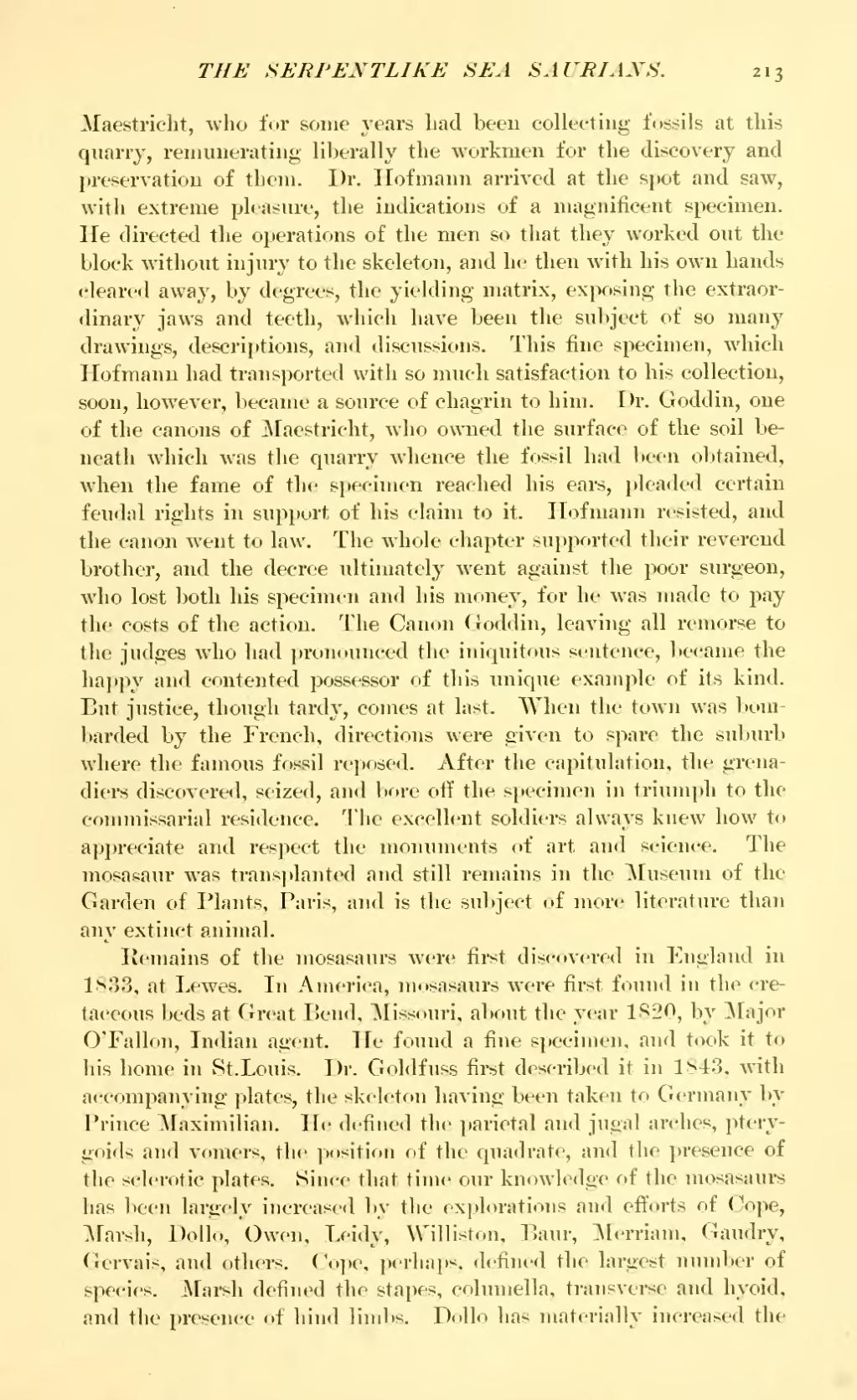Maestricht, who for some years had been collecting fossils at this quarry, remunerating liberally the workmen for the discovery and preservation of them. Dr. Hofmann arrived at the spot and saw, with extreme pleasure, the indications of a magnificent specimen. He directed the operations of the men so that they worked out the block without injury to the skeleton, and he then with his own hands cleared away, by degrees, the yielding matrix, exposing the extraordinary jaws and teeth, which have been the subject of so many drawings, descriptions, and discussions. This fine specimen, which Hofmann had transported with so much satisfaction to his collection, soon, however, became a source of chagrin to him. Dr. Goddin, one of the canons of Maestricht, who owned the surface of the soil beneath which was the quarry whence the fossil had been obtained, when the fame of the specimen reached his ears, pleaded certain feudal rights in support of his claim to it. Hofmann resisted, and the canon went to law. The whole chapter supported their reverend brother, and the decree ultimately went against the poor surgeon, who lost both his specimen and his money, for he was made to pay the costs of the action. The Canon Goddin, leaving all remorse to the judges who had pronounced the iniquitous sentence, became the happy and contented possessor of this unique example of its kind. But justice, though tardy, comes at last. When the town was bombarded by the French, directions were given to spare the suburb where the famous fossil reposed. After the capitulation, the grenadiers discovered, seized, and bore off the specimen in triumph to the commissarial residence. The excellent soldiers always knew how to appreciate and respect the monuments of art and science. The mosasaur was transplanted and still remains in the Museum of the Garden of Plants, Paris, and is the subject of more literature than any extinct animal.
Remains of the mosasaurs were first discovered in England in 1833, at Lewes. In America, mosasaurs were first found in the cretaceous beds at Great Bend, Missouri, about the year 1820, by Major O'Fallon, Indian agent. He found a fine specimen, and took it to his home in St.Louis. Dr. Goldfuss first described it in 1843, with accompanying plates, the skeleton having been taken to Germany by Prince Maximilian. He defined the parietal and jugal arches, pterygoids and vomers, the position of the quadrate, and the presence of the sclerotic plates. Since that time our knowledge of the mosasaurs has been largely increased by the explorations and efforts of Cope, Marsh, Dollo, Owen, Leidy, Williston, Baur, Merriam, Gaudry, Gervais, and others. Cope, perhaps, defined the largest number of species. Marsh defined the stapes, columella, transverse and hyoid, and the presence of hind limbs. Dollo has materially increased the

